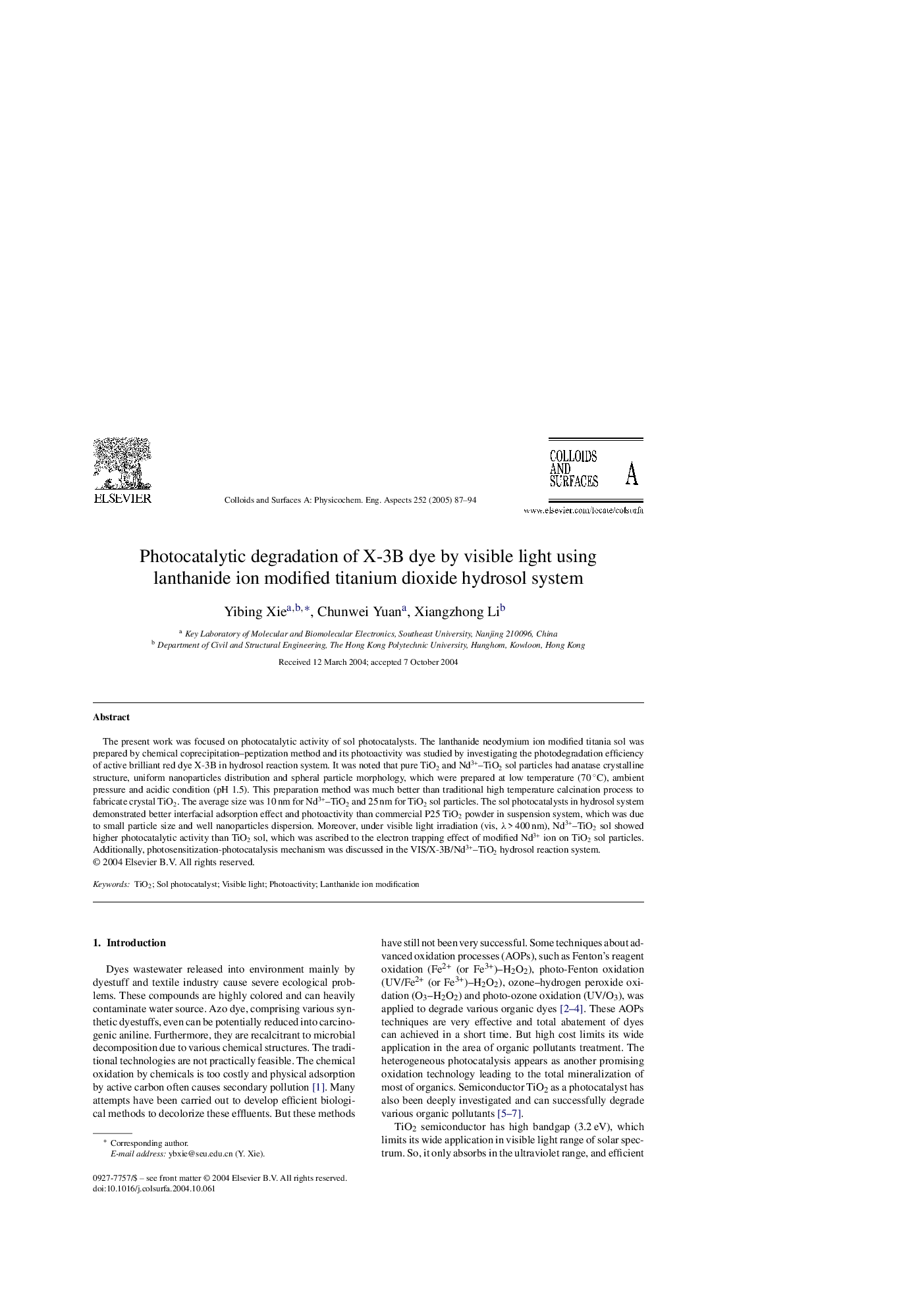| Article ID | Journal | Published Year | Pages | File Type |
|---|---|---|---|---|
| 10374627 | Colloids and Surfaces A: Physicochemical and Engineering Aspects | 2005 | 8 Pages |
Abstract
The present work was focused on photocatalytic activity of sol photocatalysts. The lanthanide neodymium ion modified titania sol was prepared by chemical coprecipitation-peptization method and its photoactivity was studied by investigating the photodegradation efficiency of active brilliant red dye X-3B in hydrosol reaction system. It was noted that pure TiO2 and Nd3+-TiO2 sol particles had anatase crystalline structure, uniform nanoparticles distribution and spheral particle morphology, which were prepared at low temperature (70 °C), ambient pressure and acidic condition (pH 1.5). This preparation method was much better than traditional high temperature calcination process to fabricate crystal TiO2. The average size was 10 nm for Nd3+-TiO2 and 25 nm for TiO2 sol particles. The sol photocatalysts in hydrosol system demonstrated better interfacial adsorption effect and photoactivity than commercial P25 TiO2 powder in suspension system, which was due to small particle size and well nanoparticles dispersion. Moreover, under visible light irradiation (vis, λ > 400 nm), Nd3+-TiO2 sol showed higher photocatalytic activity than TiO2 sol, which was ascribed to the electron trapping effect of modified Nd3+ ion on TiO2 sol particles. Additionally, photosensitization-photocatalysis mechanism was discussed in the VIS/X-3B/Nd3+-TiO2 hydrosol reaction system.
Keywords
Related Topics
Physical Sciences and Engineering
Chemical Engineering
Colloid and Surface Chemistry
Authors
Yibing Xie, Chunwei Yuan, Xiangzhong Li,
